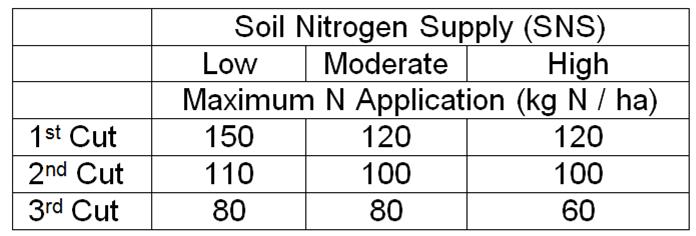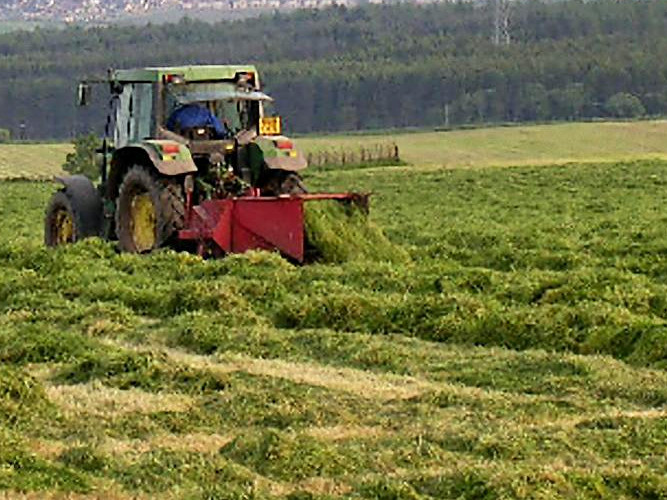Mid-Season Management of Slurry
24 June 2018With many farmers now preparing grassland for second cut silage, this article provides a reminder of some basic principles of nutrient management and considers how to make the best possible use of cattle slurry.
Key considerations when creating a plan for slurry applications and nutrient management are as follows:
- Assess soil nutrient status.
- Application rates should be in line with crop requirements.
- Consider the timings and methods of slurry application.
- Comply with cross compliance regulations (including, where relevant, NVZ regulations).
- Use a RAMS map to minimise any risk of diffuse pollution.
- Maintain adequate slurry storage capacity on farm. Secure grant funding where possible to increase slurry storage capacity.
The starting point is to establish the nutrient status of the land, by soil sampling or referring to soil sample results obtained within the last 3 – 4 years. A routine soil analysis provides results for P, K and Mg, as well as an indication of soil pH.
N Recommendations
Next, consider the nutrient requirement of the crop. For grass silage production, N recommendations may be similar to those figures shown in table 1, although more specific recommendations can be found in technical note TN 652 (Fertiliser Recommendations for Grassland).
Table 1: Recommendations for Grass Silage
To avoid excessively high N concentrations in grass swards, N applications should be made when swards can fully utilise the applied nutrients. Application rates also need to take into account any relevant limits. Nitrate concentrations in forage should ideally be less than 0.10% in order to avoid problems with fermentation in grass silage.
Nutrient Content of Cattle Slurries
Having assessed the nutrient status of the soil and considered the nutrient requirement of the growing crop, an estimate then needs to be made of the available nutrients supplied by the application of slurry. Table 2 provides a guide to the nitrogen potentially available from slurries of different dry matter content. There is significant variation in the N content of slurries of different dry matter content. This difference reinforces the importance of having slurry analysed in order to accurately gauge the nutrient content of the material being applied to the crop.
Table 2: Typical N Content and N-Availability in Cattle Slurries
Source: Technical Note TN650
Rules & Regulations
Various rules and regulations must be observed in relation to spreading cattle slurry.
The main rules applying to all farms include:
- Never exceed applications in excess of 50m3 / ha.
- Do not exceed crop requirement for N application.
- Do not apply slurry within 10m of a watercourse or within 50m of a borehole.
- Do not apply on water-logged land. (During winter, do not apply slurry to frozen or snow-covered land).
Within NVZ catchment areas, the following guidelines also need to be observed in addition to those points listed above:
- Comply with the 170 kg N / ha loading limit for livestock manure across the area of the holding.
- Comply with the 250 kg N / ha field limit for livestock manures.
- Do not make repeat applications of slurry to the same field within a three week period.
- Temporary field heaps of FYM must not be stored for any longer than 12 months in one place.
- Observe relevant closed periods during the winter.
- Do not exceed applications in excess of 30m3 / ha within the four weeks prior to any closed period and from the end of any closed period up to 14th February each year.
- Ensure there is sufficient storage (22 weeks storage is required for cattle slurry within an NVZ).
Grant Funding within Priority Catchment Areas
During the last two years, SEPA field officers in Dumfriesshire have undertaken a programme of farm inspections in areas designated priority catchments. The objective is to ensure that farm businesses have adequate storage facilities in place and that they present no diffuse pollution risks. SEPA also look at stock numbers and consider if storage capacities are sufficient.
Farms that are located within a priority catchment area (but outside an NVZ catchment) may be eligible for grant assistance for the construction of new slurry stores. Farms that are within an NVZ catchment are NOT eligible. The grants for slurry storage are available as a stand-alone option within the Agri Environment Climate Scheme (AECS).
alastair.beattie@sac.co.uk, Agricultural Consultant
Sign up to the FAS newsletter
Receive updates on news, events and publications from Scotland’s Farm Advisory Service



